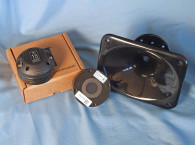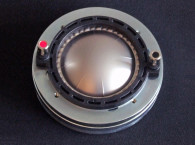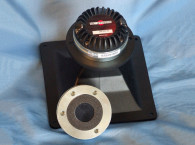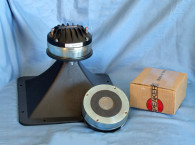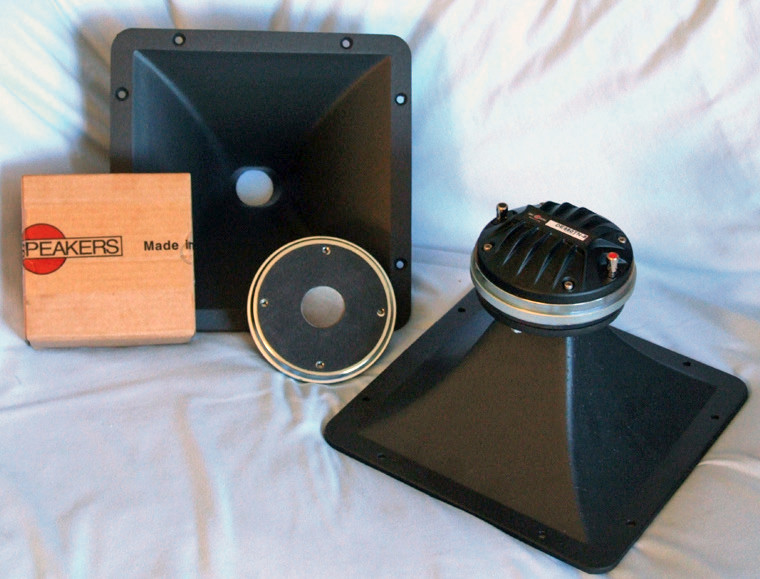
The B&C Speakers DE980TN-8’s throat diameter is 36 mm (1.4”) coupled to a 75-mm (3”) diameter voice coil wound with copper-clad aluminum DE980TN-8 has a 1.4” throat diameter, 80° horizontal × 60° vertical, constant-directivity cast-aluminum horn with a solid 900-Hz cut-off frequency.
I used the LinearX LMS analyzer to produce the 200-point sine wave impedance plot shown in Figure 1. The solid black curve in Figure 1 shows the DE980TN-8 mounted on the ME90 horn and dashed blue curve represents the compression driver without the horn. With a 6.0-Ω DCR, the DE980TN-8/ME90’s minimum impedance was 7.8 Ω at 5.9 kHz.
For the next frequency-response tests, I recess mounted the B&C Speakers DE980TN-8/ME90 in an enclosure with a 10” × 15” baffle and used a 100-point gated sine wave sweep to measure the horizontal and vertical on- and off-axis at 2.83 V/1 m. Figure 2 displays the compression driver/horn combination’s on-axis, which is smooth with no major anomalies out to 18 kHz. There is a small mode at 15.6 kHz, and a declining response as the frequency increases, which is typical of constant directivity horns. B&C Speakers’s recommended crossover frequency for the DE980TN-8 is 1.2 kHz with a second order or higher slope.
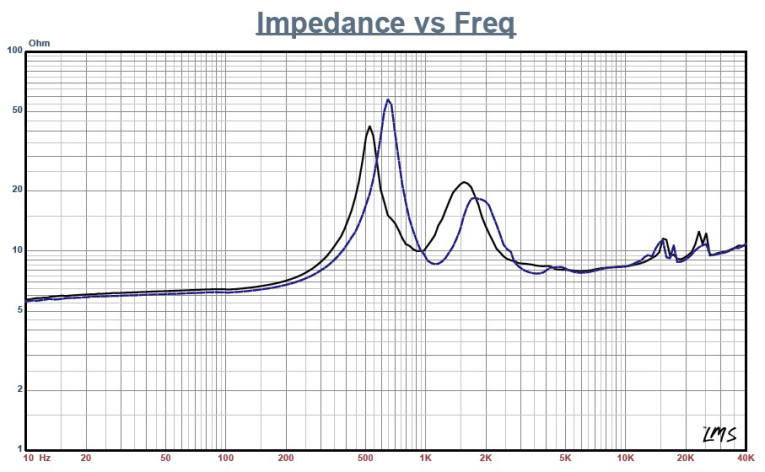

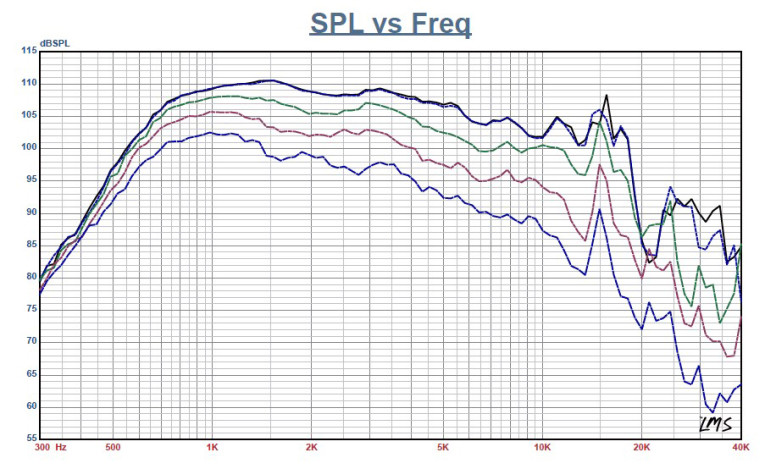
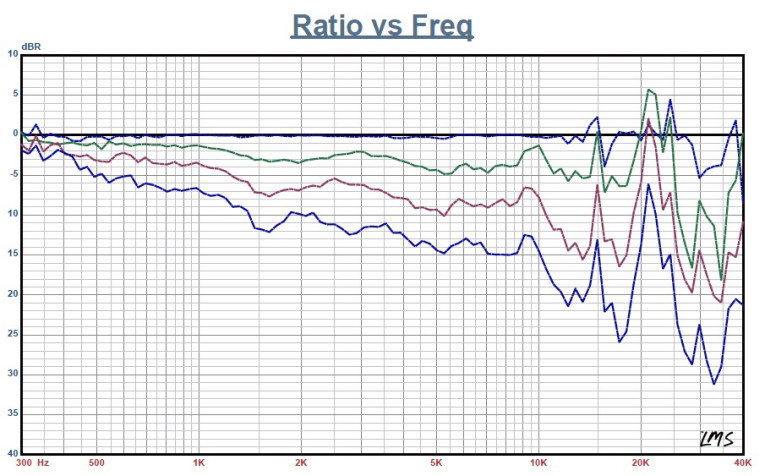

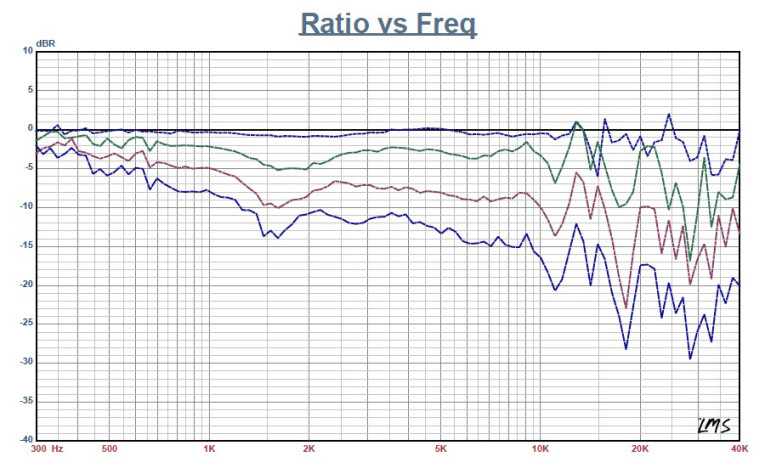

Figure 3 shows the on- and off-axis response in the horizontal plane. Figure 4 gives the DE980TN-8’s normalized horizontal plane response. Figure 5 provides the on- and off-axis response in the vertical plane. Figure 6 shows its normalized vertical plane response. Figure 7 displays the two DE980TN-8 compression driver samples to be closely matched in a two-sample comparison.
I used the Listen AmpConnect ISC analyzer and 0.25” SCM microphone to measure distortion and generate time-frequency plots. For the distortion measurement, I mounted the B&C Speakers DE980TN-8/ME90 combination with the same baffle used for the frequency-response measurements. I used pink noise stimulus to set the SPL to 104 dB at 1 m (1.88 V) and placed the Listen microphone 10 cm from the horn’s mouth. This produced the distortion curves shown in Figure 8. I then used SoundCheck to get a 2.83 V/1 m impulse response and imported the data into Listen’s SoundMap time-frequency software. Figure 9 provides the resulting CSD waterfall plot. Figure 10 shows the short-time Fourier transform (STFT) plot. The DE980TN-8’s build quality and performance is excellent.
For more information, visit www.bcspeakers.com
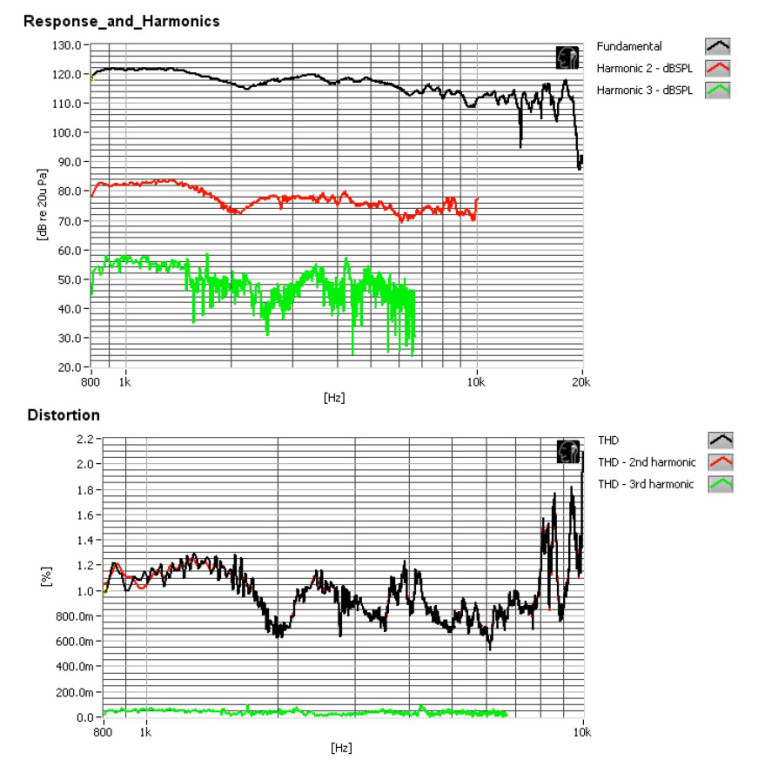

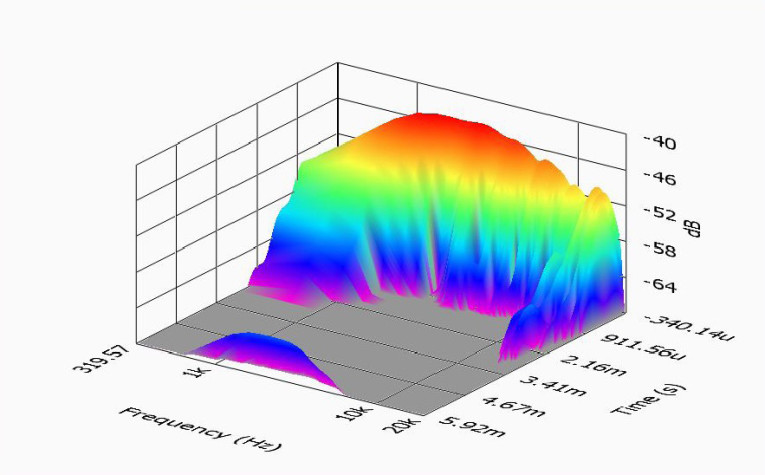
This article was originally published in Voice Coil, September 2013




